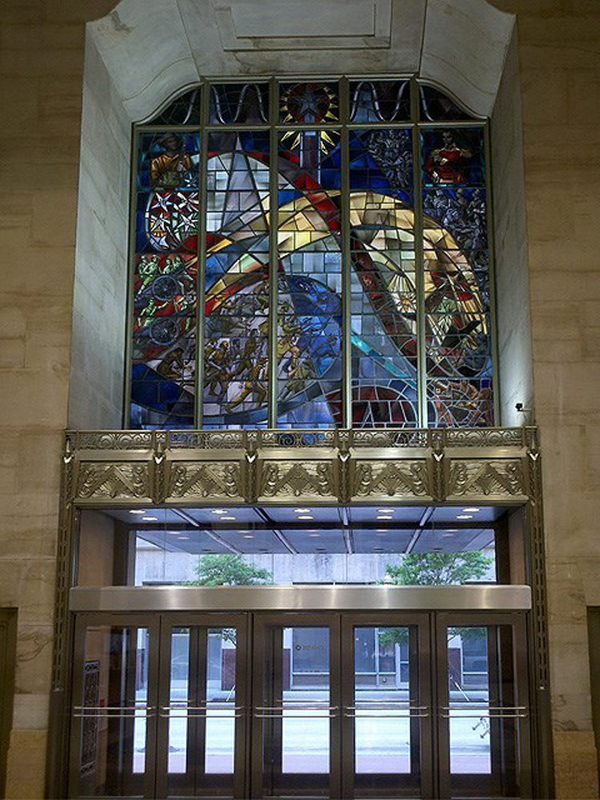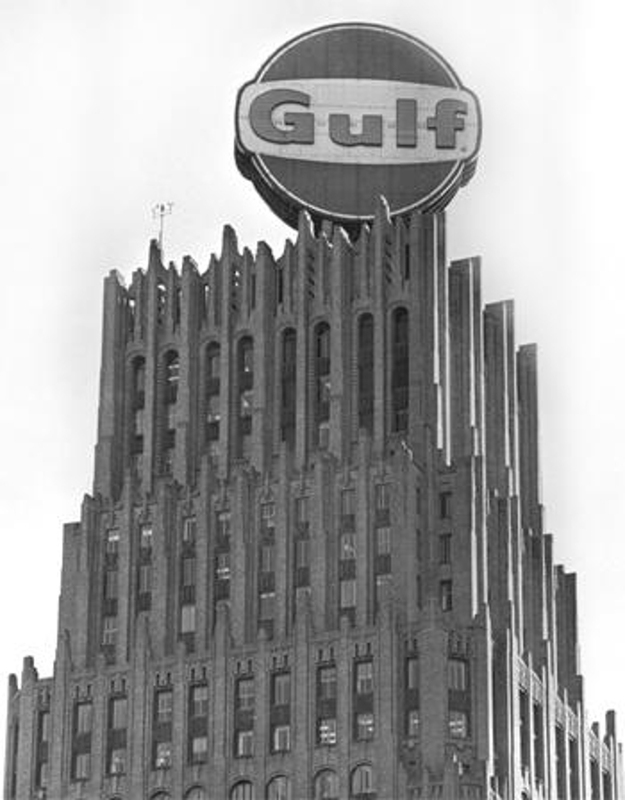The Gulf Building

Commissioned by Jesse H. Jones and designed by architects Alfred C. Finn, Kenneth Franzheim, and J.E.R. Carpenter, the 37-story, 430-foot Gulf Building at 712 Main Street was the tallest structure in Houston when it was completed in 1929. Although it was eventually surpassed in height by Houston's Exxon Building in 1963, the Gulf Building remains one of the preeminent art deco skyscrapers in the southwestern United States.
Like its neighbor, the Rice Building, Jones’ Gulf Building was situated on historic land in the center of Houston. The site had formerly been the location of Charlotte Baldwin Allen’s home between 1850 and 1895. Allen, called the “Mother of Houston,” had been the wife of Augustus Chapman Allen and the sister-in-law of John Kirby Allen, the founders of the city of Houston. She played a supporting role in the Allen brothers’ campaign to make Houston the capital of the Republic of Texas from 1837 to 1839 and backed their effort to build the first Texas statehouse in Houston. As historian Nancy Baker Jones has explained, Charlotte Allen proved to be a well-connected and influential woman, who, after the death of her brother-in-law, separated from her husband in 1850 to become one of Houston’s leading citizens.
In 1911, sixteen years after Charlotte Allen’s death, the wooden home that she had once occupied on Main Street was razed, and the Houston Trunk Company took up residence at the location. This situation lasted only briefly, however, because Jesse Jones purchased the property and commissioned the construction of a new skyscraper there in 1927.
The new building that went up at the corner of Main Street and Rusk Avenue took two years to complete and cost an estimated 3.5 million dollars. Framed in steel and covered in Indiana limestone, the building was richly decorated with vaulted ceilings, ornamental fixtures, and eight frescoes illustrating the history of Texas and Houston. The main three-story lobby of the structure served as the headquarters of Jones' National Commerce Bank, and its offices had entrances on both Main and Travis. Meanwhile, the building received its name from the Gulf Oil Corporation, which leased the 7th to 19th floors for its Houston offices, while operating a huge, fifty-three-foot-high rotating neon version of the company’s famous Gulf Oil insignia from the building's rooftop.
The Gulf Building is connected to Houston's downtown tunnel system. It has been officially designated a City of Houston Historic Landmark, a Texas State Historic Landmark, and a National Historic Civil Engineering Landmark. The building was listed in the National Register of Historic Places in 1983.
Images






